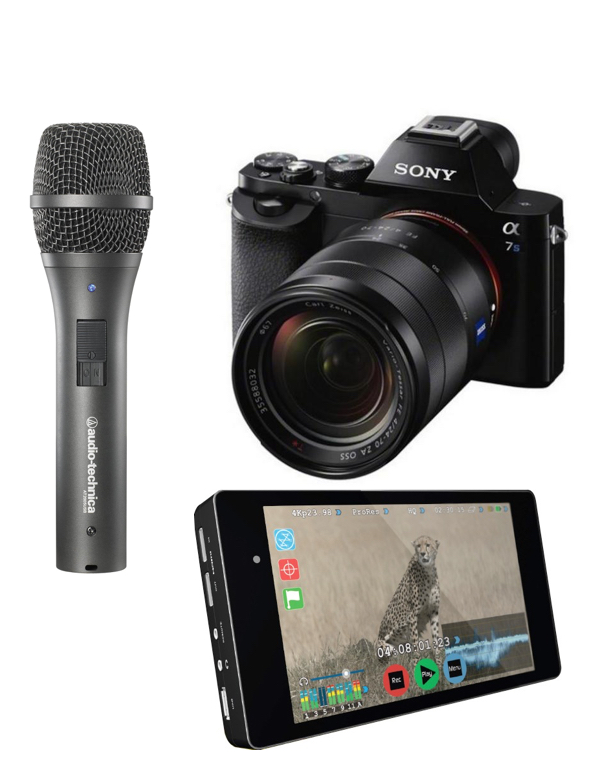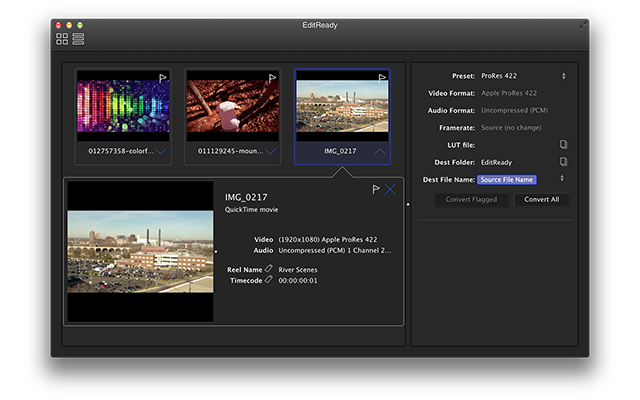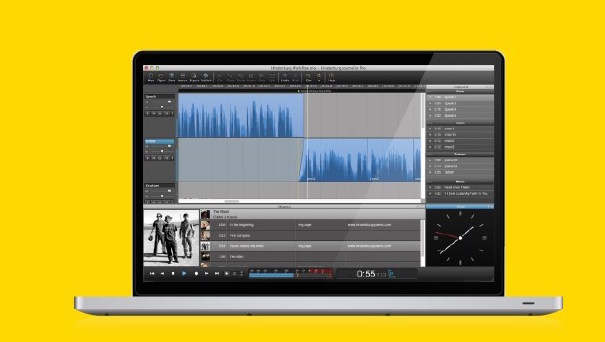My friend Jorge González and I got together to test the audio quality on his Sony A7s and with the Átomos Shogun 4K/UHD recorder/monitor I’m evaluating. The A7s is now famous for its exceptional low-light performance imaging in 1080p or 4K/UHD —yet dependence on an external recorder for 4K/UHD. The Shogun is equally famous as a 4:2:2/10-bit recorder which receives frequent updates to support more Raw video formats and other features every time we blink. Ahead are the test recordings and the surprising results.

My friend Jorge González and I got together to test the audio quality on his Sony A7s and with the Átomos Shogun 4K/UHD recorder/monitor I’m evaluating. The A7s is now famous for its exceptional low-light performance imaging in 1080p or 4K/UHD —yet dependence on an external recorder for 4K/UHD. The Shogun is equally famous as a 4:2:2/10-bit recorder which receives frequent updates to support more Raw video formats and other features every time we blink. Ahead are the test recordings and the surprising results.
How we made the test recordings
As has been my policy for several years when testing preamps/A-to-D (analog-to-digital) converters, whenever possible, I use a dynamic microphone. The reason is that since dynamic microphones generally have a lower output level, they allow making a true test of the preamplifier, rather than making it easy, as in the case with a condenser microphone, which generally has a much higher output, which means much less work for the preamp.
In this case, we used the analog XLR output from the Audio Technica AT2005USB (reviewed in several articles and ebooks) which was mounted on the Heil PL–2T flexible desk boom.
With the Sony A7s
When recording with the Sony A7s, we used a passive adapter from balanced XLR to unbalanced 3.5 mm on the camera. (Passive means that there is no amplification in the adapter.) We were quite surprised that the preamp in the Sony A7s allowed us to get a decent level at only 50% of the preamp’s gain adjustment via the camera menu. With many other DSLR and mirrorless cameras, a dynamic microphone’s low output would require setting the camera input to the maximum gain setting.
In the case of the recording with the Shogun, we got a double surprise, as explained ahead.
Double surprise with the Shogun
Here are the double surprises:
EMI/RFI encountered and then resolved
When we first tested the Shogun, we had a terrible problem with EMI/RFI (Electromagnetic interference/Radio interference) which we did not have with the direct connection to the A7s. So I contacted Átomos and explained my setup:
Using the exact same XLR-to-XLR cable used to connect the AT2005USB to the A7s (through a passive adapter to unbalanced 3.5mm), the Shogun had to be set to its maximum gain (more details ahead), and picked up EMI/RFI (Electromagnetic interference/Radio interference) that the A7s did not. I made a second test where I put both mobile phones that were in the area into Airplane/Flight mode and moved them very far away, but there was no reduction in the EMI/RFI. The only way that I was able to get rid of the EMI/RFI was to use a condenser microphone, where the input level in the Shogun could be much lower (about +10 dB). I clarified that the balanced dynamic microphone used for the test is the same one —and with the same XLR cable— used to test the A7s, and multiple audio preamps from ART, Audio Technica, Avid, IK Multimedia, Roland, SoundDevices and Tascam, all of which I have reviewed in ProVideo Coalition magazine. It is also the same microphone and cable used to record my CapicúaFM audio podcast, which already reaches over 48,000 listeners in over 125 countries, according to Podtrac Inc., and where I strive to achieve impecable audio quality.
Regarding the EMI/RFI issues, Átomos was confident I had received a faulty Shogun. They clarified that some of the early units had an internal cabling issue which resulted in EMR and EMI measurements not in line with what they strive for. I returned the first Shogun, received a replacement, and the EMI/RFI issues were solved.
Gain issues: reported… and to be corrected with an upcoming firmware update
The Shogun’s current specs indicate that it only offers maximum of +40 dB gain. Currently, the menu input options for audio are:
Pro Level (+24 dBu)
Sets the analog input channel to pro line level via the XLR inputs.
Line Level (–10 dBV)
Sets the analog input channel to consumer line level via the XLR connectors.
Mic Level (–40 dBu)
Sets the analog input channel to mic level via the XLR input.
Mic 48v ON
Enables phantom power for mic’s connected via the XLR connection.
Since we were intentionally using a dynamic microphone for the reasons explained earlier in this article, we selected Mic Level (–40 dBu). Those are the rough settings. The menu also offers fine gain adjustment which offers to ±20dB. We needed to crank it to the maximum to get a decent level.
I expressed my surprise to Átomos that the nominal mic setting on the Shogun is currently only –40 dBu and not at least –60 dBu. As an example, I cited the US$199 Tascam DR–60DmkII audio recorder (which I reviewed in December 2014), which offers up to +64 dB of gain on its microphone preamps. Átomos responded that sometime soon, there will be another firmware update for the Shogun which will offer –60 dBu nominal.
Even though we had to crank the Átomos input gain to the absolute maximum setting to get a decent audio level, the recording is quite clean, as you’ll hear ahead.
How I processed the files
Both original recordings were video with embedded audio. When we were recording, we thought I’d publish the video and audio. Later, we decided that it made sense to publish them as audio only, for several reasons. In order to extract the audio from the consumer format XAVC Long GOP recorded by the A7s, I extracted the audio in two steps:

First, I used EditReady (shown above, reviewed here) to transcode the video from consumer format XAVC Long GOP to ProRes 422, leaving the audio unadulterated as uncompressed “stereo” (actually dual mono) 48 kHz. (I couldn’t find any way to export audio-only from EditReady.) Then I opened the resulting ProRes 422 file with QuickTime Pro 7 and exported an uncompressed WAV “stereo” (actually dual mono) 48 kHz.

I opened that file in Hindenburg Journalist PRO (shown above, reviewed in Meet the Hindenburg family of audio production/editing tools and in Why Hindenburg Journalist PRO is the best Skype audio production tool I’ve ever used, separated the “stereo” file into two separate mono tracks, eliminated the unused channel, trimmed, leveled, and exported a mono 48 kHz file and uploaded into SoundCloud. SoundCloud automatically created a corresponding MP3 for streaming via the player, but you are also welcome to download the original WAV file if desired. I actually exported and uploaded two: one flat, and the other with Hindenburg Journalist PRO’s Voice Profiler EQ, so you can listen to both.
One less step was required with the ProRes 422 file from the Shogun. Since it is already readable by QuickTime Pro 7, I followed the same steps covered above, but skipping the EditReady step. Presently, the Shogun is not capable of recording audio only, although I have suggested that option to Átomos. I don’t know if they’ll add it to a future firmware version.
Test recordings
Thanks to Jorge González
Thanks to Jorge González of Acquest Multimedia for helping record these tests with his A7s.
Conclusions
The A7s surprised me, both with its cleanliness and potential gain. After its EMI/EMR issues were resolved by Átomos, I was glad to know that they will be adding gain in an upcoming update to the Shogun. I am happily surprised as even at the Shogun’s maximum gain, the result was very clean. (Many other audio preamplifiers have hiss and other negative artifacts at their maximum.)
If you have ever heard comparisons of preamplifiers before (mine or those of others), you already know that just like microphones, different preamplifiers have their own unique sound.
I plan to publish another article once the firmare update adds the increased nominal gain for microphones.
Upcoming articles, reviews, and books
Stand by for upcoming articles, reviews, and books. Sign up to my free mailing list by clicking here.
Si deseas suscribirte a mi lista en castellano, visita aquí. Si prefieres, puedes suscribirte a ambas listas (castellano e inglés).
Books, consulting, articles, seminars & audio programs
Contact Allan Tépper for consulting, or find a full listing of his books, articles and upcoming seminars and webinars at AllanTepper.com. Listen to his CapicúaFM program at CapicúaFM.com in iTunes or Stitcher.
My latest book (paperback + ebook)

My most recent book is available in two languages, and in paperback as well as an ebook. The ebook format is Kindle, but even if you don’t have a Kindle device, you can read Kindle books on many other devices using a free Kindle app. That includes iPad, Android tablets, Mac computers, and Windows computers. Although generally speaking, Kindle books are readable on smartphones like Androids and iPhones, I don’t recommend it for this particular book since it contains both color photos and color comparison charts. The ebook is also DRM-free.
In English, it’s The Castilian Conspiracy. Click here and you will be automatically sent to the closest Amazon book page to you based upon your IP address. Or request ISBN–10: 1456310232 or ISBN–13: 978–1456310233 in your favorite local bookstore.
En castellano, se llama La conspiración del castellano. Haz clic aquí para llegar al instante a la página del libro correspondiente a tu zona y moneda en Amazon, según tu dirección IP. De lo contrario, solicítalo en tu librería preferida con los ISBN–10: 1492783390 ó el ISBN–13: 978–1492783398.
FTC disclosure
No manufacturer is specifically paying Allan Tépper or TecnoTur LLC to write this article or the mentioned books. Some of the other manufacturers listed above have contracted Tépper and/or TecnoTur LLC to carry out consulting and/or translations/localizations/transcreations. Many of the manufacturers listed above have sent Allan Tépper review units. So far, none of the manufacturers listed above is/are sponsors of the TecnoTur programs, although they are welcome to do so, and some are, may be (or may have been) sponsors of ProVideo Coalition magazine. Some links to third parties listed in this article and/or on this web page may indirectly benefit TecnoTur LLC via affiliate programs.
Copyright and use of this article
The articles contained in the TecnoTur channel in ProVideo Coalition magazine are copyright Allan Tépper/TecnoTur LLC, except where otherwise attributed. Unauthorized use is prohibited without prior approval, except for short quotes which link back to this page, which are encouraged!

Filmtools
Filmmakers go-to destination for pre-production, production & post production equipment!
Shop Now














